Chapter3 - Fuselage
Section 1 - Front Fuselage
Fabricating the Radiused Sections
Cut 12 strips of 1/2" last-a-foam from a full size sheet (96" long) 1.5" wide. The easiest way to do this is on a table saw.
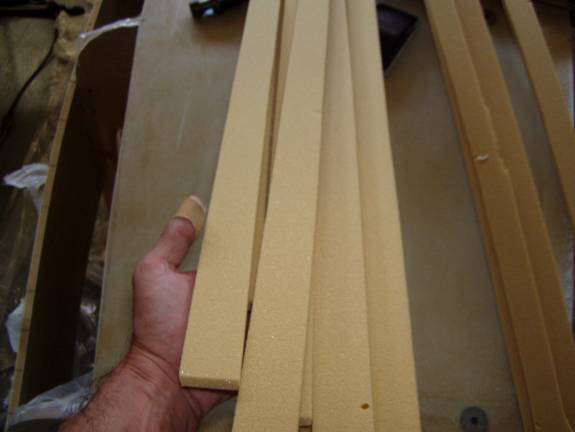
1.5" Wide Strips of .5" thick 4.5 lb. last-a-foam
Mix up a batch of thick micro and butter the edge of the fuselage side as shown in the photo below.
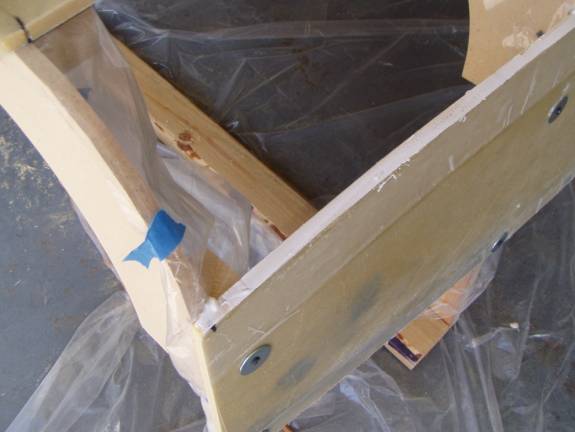
Thick Micro on fuselage side's edge
Apply thick micro to one long edge of one of the 1.5" wide foam strips. Use a thin nail to secure the foam strip against the radiused corner block against the already microed fuselage side. The nail should not be driven all the way in as it is to be used only to hold the strip againts one edge of the former. Let the foam strip take on a smooth curve of the fuselage from front to back. Use your gloved fingers to carefully align it all along the fuselage side edge so there is a uniform alignment with the side. Sight down the strip to insure there are no discontinuities in the foam strips curve.
When satisfied with the first strip, repeat the process. Butter the top of the first strip with thick micro, butter one side of another foam strip and secure it in place with finishing nails.
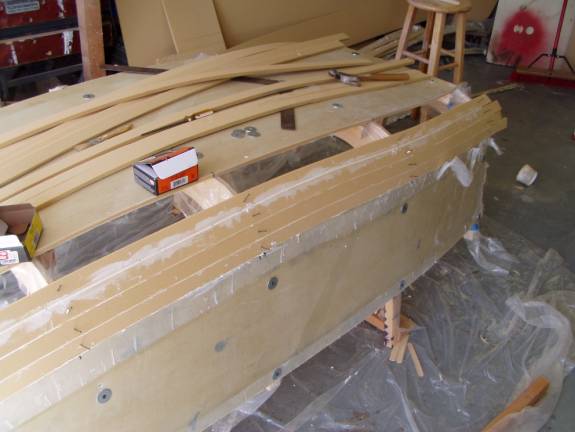
Add another foam strip, then another
Plan ahead and insure that the six foam strips are equally spaced. You don't want to get to the last strip and find you have a large gap. Small gaps are OK and can be filled with micro, as seen in the photos or even thin slivers of excess foam.
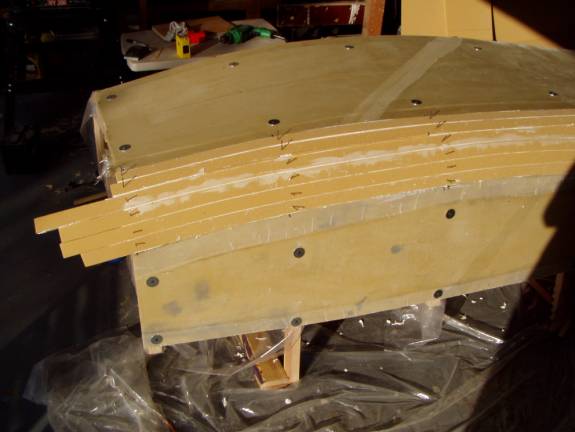
Completed Radius
Repeat the process on the opposite side.
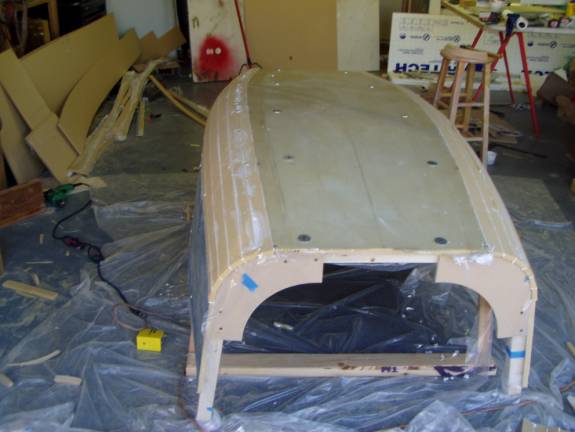
Both Radius Complete
While the Micro is still soft wipe the excess from the inside the radius. Doing this now will save you work cleaning up hardened micro later.
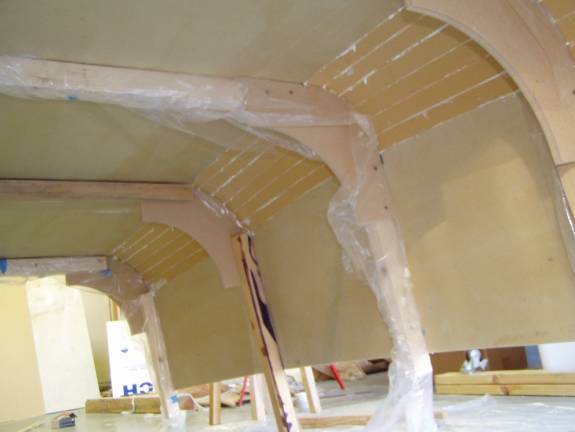
Clean up the Micro from the Inside
Congratulations you have completed one of the more challenging tasks. Let the assembly cure. Pull together the tools that you will need to sand the radius down. The photo shows the tools that you will need. The flat sides tools are used to level the edge of the radius with the fuselage sides and bottom. The large curved tool is the key to a professional looking radius. This one was made from MDF and has an inside radius of 6.5" There are two short extenstions, about 1.5" long extending straight out at the 98 degree angle of the side to bottom angle. .
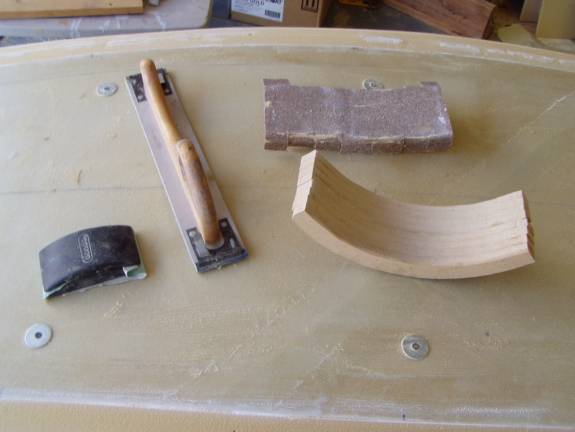
Sanding Tools for radius
The key to this large radiused sanding tool are the straight edges that extend out that donot have sand paper on them. These edges will ride down on the fuselage bottom and sides and allow the sand paper to cut a perfect radius uniformly for the length of the assembly. Stable coarse (40 grit) paper to the tool. Work the tool all the way along the edge to get a uniform shape.
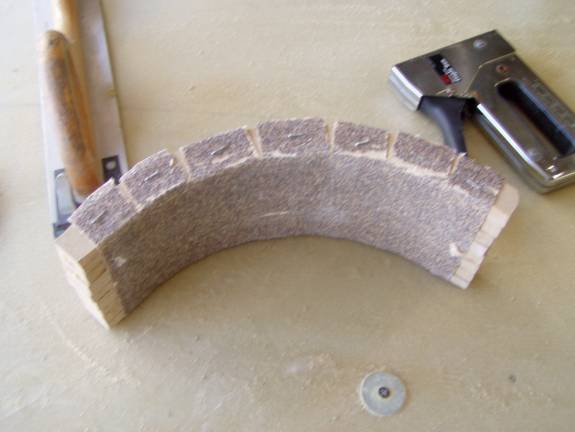
Staple 40 grit paper to the Sanding Tool
When a nice radius is acheived, use a sheet of 100 grit sand paper to lightly touch up any imperfections. Use your hand to insure you have the desired shape. When satisfied, vacuum the foam and prepare to glass the outside.
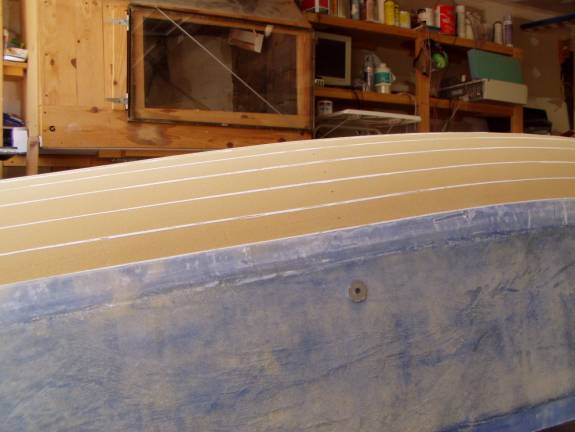
Radius ready for Glass.
Double check that the fuselage assembly is still leveled up and that no panels were distrurbed. Cut strips of UNI the length of the fuselage wide enough to cover the radiused section and extend onto the side and bottom panels far enough to come to the edge of the joggle. Refer to the following photo. I am pointing to where the UNI should extend to, this will be a piece about 12" to 13" wide. Also cut strips of BID on the 45 degree bias as this will be placed over the UNI.
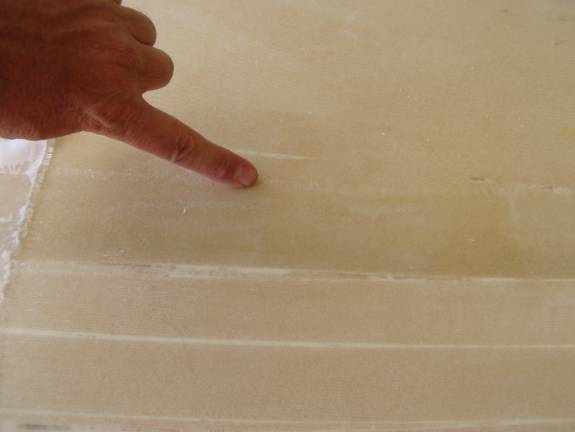
Extend fiberglass to the edge of the Joggle
Again, the glassing schedule for the radius is layer of UNI running the length of the fuselage and a layer of BID. Below I have used peel ply to provide a nice finish.
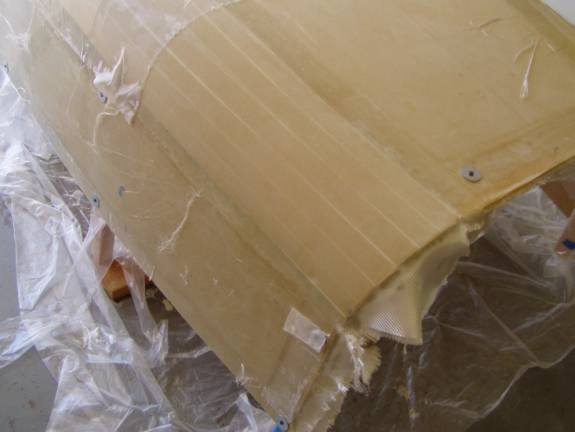
Nice looking Radiused Corner
Remove the peel ply and trim the extra glass from the ends of the panels. The panels and radiused sections were made oversized, it is time to trim the forward fuselage section to size.
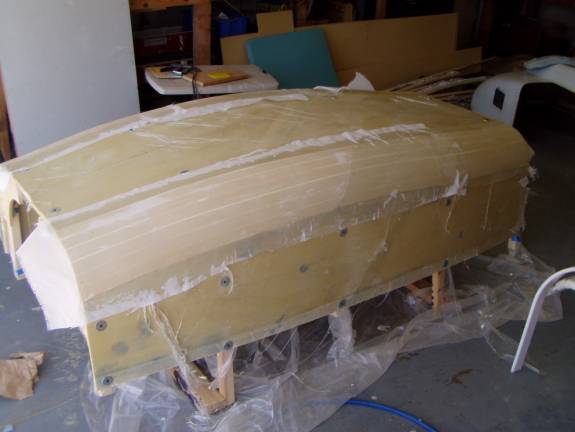
Nice looking Radiused Corner
Use a large square to remark the forward fuse centerline and then extend the forward and rear edgte of the fuselage using the marks we have made earlier
Once the glass on the outside radiused sections has cured, we will carefully flip the fuselage section over. The inside radiused sections are glassed in at this time, but not all at once--we do not want to lose the shape the frame defines. With the frames still in place, sand the foam and prep it, filling with micro, slurring as necessary. You do not need to do as nice of a job as on the outside as this inside will most likely be covered with upholstery.
We will remove the second and third frame members first. Measure the width of the fuselage at the these two frame members (B and D) , then remove them. Remeasure the width of the fuselage and brace it to insure the proper width. Now lay down a single layer of BID running from the first frame member to the middle and from the middle (C frame) to the last, covering the inside radiused sections on both sides. Let fully cure. The shape of the fuselage is being locked in now. Reinstall the B and D frame members .You can now remove the other frame members and glass the remaining exposed foam. The forward fuselage will still be a bit flexible until the firewall and other bulkheads are bonded into place.
Once the center section of the radius is glassed and cured, re install all frame members. It is now time to move on to the rear fuselage section.
Once the center section of the radius is glassed and cured, re install all frame members. It is now time to move on to the rear fuselage section.